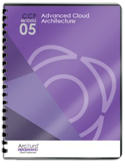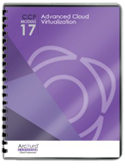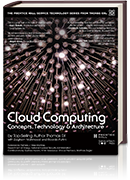Cloud Computing Patterns, Mechanisms > Reliability, Resiliency and Recovery Patterns > Hypervisor Clustering
Hypervisor Clustering (Erl, Naserpour)
How can a virtual server survive the failure of its hosting hypervisor or physical server?

Problem
The failure of a hypervisor or its underlying physical server cascades to all hosted virtual servers further causing their hosted IT resources to fail.
Solution
Hypervisors are clustered across multiple physical servers, so that if one fails, active virtual servers are transferred to another.
Application
Heartbeat messages are passed between clustered hypervisors and a central VIM to maintain status monitoring. Shared storage is provided for the clustered hypervisors and further used to store virtual server disks.
Mechanisms
Cloud Storage Device, Hypervisor, Logical Network Perimeter, Resource Cluster, Resource Replication, Virtual Infrastructure Manager, Virtual Server, Virtual Switch, Virtualization Monitor
Compound Patterns
Burst In, Burst Out to Private Cloud, Burst Out to Public Cloud, Cloud Authentication, Cloud Balancing, Elastic Environment, Infrastructure-as-a-Service (IaaS), Isolated Trust Boundary, Multitenant Environment, Platform-as-a-Service (PaaS), Private Cloud, Public Cloud, Resilient Environment, Resource Workload Management, Secure Burst Out to Private Cloud/Public Cloud, Software-as-a-Service (SaaS)
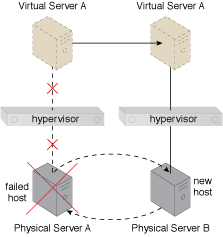
Physical Server A becomes unavailable, thereby bringing down its hypervisor. Because the hypervisor is part of a cluster, Virtual Server A is migrated to a different host (Physical Server B), which has another hypervisor that is part of the same cluster.
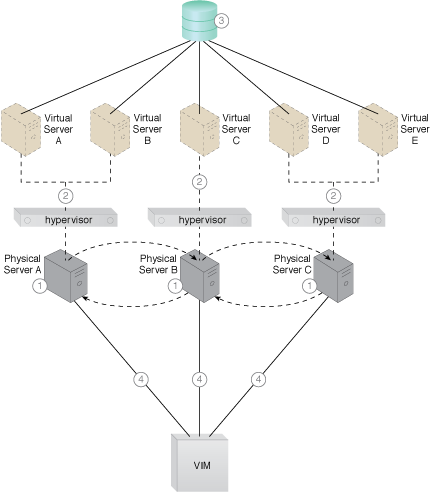
A cloud architecture resulting from the application of the Hypervisor Clustering pattern (Part I). These initial steps detail the assembly of required components.
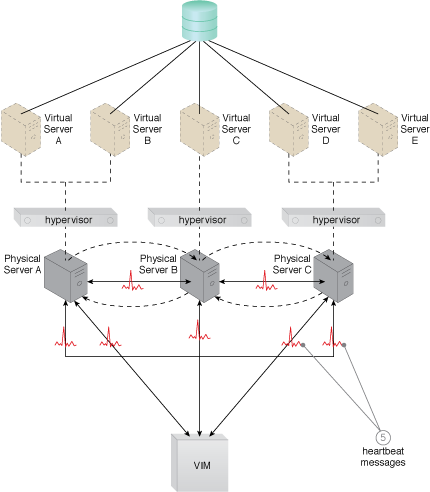
A cloud architecture resulting from the application of the Hypervisor Clustering pattern (Part II).

A cloud architecture resulting from the application of the Hypervisor Clustering pattern (Part III).

A cloud architecture resulting from the application of the Hypervisor Clustering pattern (Part IV).
NIST Reference Architecture Mapping
This pattern relates to the highlighted parts of the NIST reference architecture, as follows:
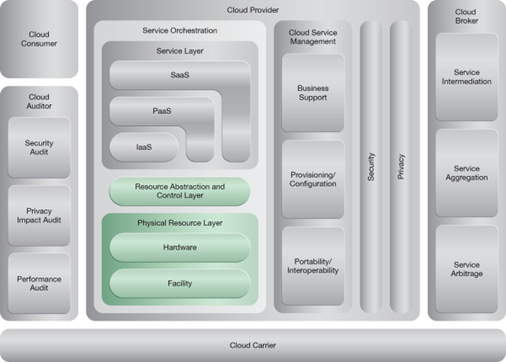
This pattern is covered in CCP Module 5: Advanced Cloud Architecture.
For more information regarding the Cloud Certified Professional (CCP) curriculum, visit www.arcitura.com/ccp.
This pattern is covered in CCP Module 17: Advanced Cloud Virtualization.
For more information regarding the Cloud Certified Professional (CCP) curriculum, visit www.arcitura.com/ccp.
This cloud computing mechanism is covered in:
Cloud Computing: Concepts, Technology & Architecture by Thomas Erl, Zaigham Mahmood,
Ricardo Puttini
(ISBN: 9780133387520, Hardcover, 260+ Illustrations, 528 pages)
For more information about this book, visit www.arcitura.com/books.
